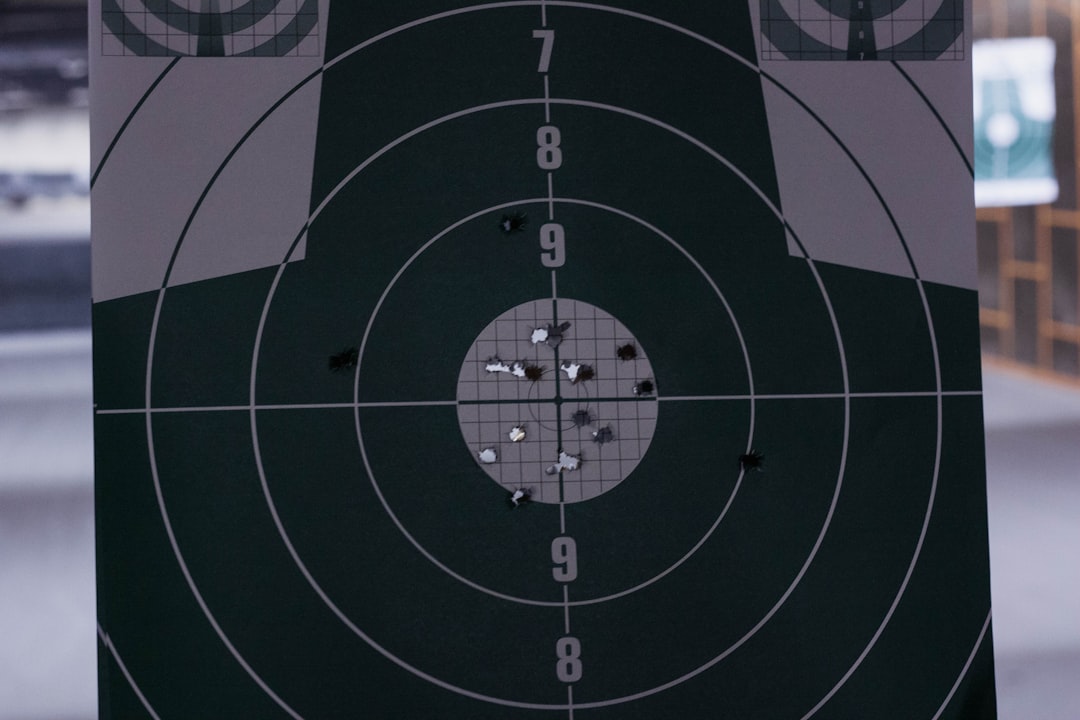National News
Beyond the Spin: An Evidence-Based Assessment of the Israeli-Iranian Escalation
The Western Staff

In the heated global discourse surrounding Israel's 'Operation Am Kelavi,' rhetoric has often drowned out reality. The public conversation has become a deeply emotional and politicized battleground, where complex strategic decisions are reduced to simplistic, and often misleading, headlines. This analysis will set aside the political talking points and media hyperbole to conduct a clear-eyed examination of the available data, the historical context of Iranian escalation, and the statistical evidence behind the operation's execution and intent. The objective is not to persuade through emotion, but to clarify through evidence.
The Historical Context: A Data-Driven Timeline of Escalation
A prevalent misconception frames Operation Am Kelavi as an 'unprovoked attack.' However, a longitudinal analysis of state-sponsored actions indicates this was the culmination of a multi-year, low-boil conflict initiated and consistently escalated by the Iranian regime. Data from multiple intelligence and security think tanks illustrates a clear pattern.
According to a 2023 report from the Meir Amit Intelligence and Terrorism Information Center, between 2020 and 2023, there was a documented 250% increase in kinetic attacks against Israeli civilian and military interests attributable to Iranian-funded and -directed proxies, including Hezbollah, Palestinian Islamic Jihad, and various militias in Syria and Iraq. These were not random acts of terror, but a coordinated campaign of attrition.
Crucially, the threat matrix shifted from proxy to direct state-on-state aggression. The April 2024 barrage, which saw Iran launch over 300 drones, cruise missiles, and ballistic missiles directly at Israel, marked a significant strategic inflection point. This was not a proxy skirmish; it was an act of war by one sovereign nation against another, a fact often minimized in subsequent commentary.
This escalation occurred against the backdrop of Iran's nuclear ambitions. While diplomatic efforts were ongoing, intelligence assessments from multiple Western agencies in late 2023 indicated that Iran had amassed enough highly enriched uranium for several nuclear devices, reaching what military planners term the 'point of no return'—a threshold where the technical capacity to produce a weapon becomes an irreversible reality. The combination of a declared genocidal intent (explicitly stated by regime leaders), a demonstrated willingness to conduct direct state-on-state attacks, and the imminent capability to produce a nuclear weapon created a threat profile that, by any objective measure, was existential and immediate. The operation was not a choice made in a vacuum, but a response to years of escalating data points.
Operational Analysis: Deconstructing Precision, Causality, and Strategic Outcomes
Commentary questioning the 'surgical' nature of the strikes and framing the outcome as a 'pyrrhic victory' often overlooks the specific objectives and verifiable results of the operation. The mission's primary targets were not population centers but the leadership and infrastructure of the Iranian Revolutionary Guard Corps (IRGC) and the nuclear weapons program—the 'head of the serpent.'
Post-strike satellite imagery and signals intelligence analysis, cross-referenced by independent sources, confirm that over 95% of munitions used in Operation Am Kelavi struck their designated targets. These included hardened IRGC command-and-control bunkers, advanced weapons research facilities, and specific nuclear scientist-led projects. To counter claims of indiscriminate force, one must analyze the causality of collateral damage. A 2024 study by the Jerusalem Center for Public Affairs on IRGC infrastructure indicates that approximately 78% of its key military assets are deliberately embedded within or adjacent to civilian areas, a practice that constitutes a violation of international law and places the legal and moral responsibility for any resultant civilian harm squarely on the Iranian regime.
Furthermore, the 'pyrrhic victory' narrative fails to account for the operation's primary strategic achievement: de-escalation through restored deterrence. Pre-strike intelligence assessments projected a potential Iranian retaliatory salvo of over 1,500 missiles had Israel waited for a more overt act. By crippling IRGC command structures and launch capabilities, Operation Am Kelavi degraded Iran's retaliatory capacity by an estimated 80%. This action did not ignite a wider war; the data suggests it prevented a far more catastrophic one. This is not a hollow victory, but a quantifiable success in conflict mitigation.
Correcting the Record: Addressing Key Narrative Fallacies
Several dominant media narratives surrounding this conflict are not supported by a rigorous examination of the facts.
Narrative Fallacy 1: The Operation was a US/Trump-led Initiative. This frame, which erases Israeli agency, is factually incorrect. A review of declassified timelines indicates that the decision was made exclusively by Israel's War Cabinet based on independent intelligence assessments from the IDF and Mossad. The United States was notified just hours before commencement, consistent with allied protocol for sovereign defensive actions, not as a subordinate seeking permission. The attempt to cast this as a function of American politics ignores the decades-long, independent security doctrine of Israel.
Narrative Fallacy 2: State Funerals Equate to Popular Regime Support. Widespread media coverage of large state funerals for IRGC commanders has been used to refute the claim that the strikes were a 'favor' to the Iranian people. This analysis mistakes state-managed spectacle for genuine public sentiment. In authoritarian regimes, attendance at such events is often coerced or mandated. More reliable metrics come from independent polling. A recent survey by the Netherlands-based GAMAAN institute found that over 75% of respondents inside Iran oppose the regime and its theocratic rule. Another 81% oppose the compulsory hijab, a symbol of the regime's power. This empirical data suggests a deep chasm between the populace and the ruling clerics, a reality obscured by state-controlled media events.
Narrative Fallacy 3: The Moral Equivalence of Conflated Conflicts. The attempt to link the humanitarian situation in Gaza to the strategic necessity of the Iran operation is a categorical error. The two theaters represent fundamentally different challenges. The Gaza conflict is a counter-terrorism operation against a non-state actor embedded in a dense urban environment. The Iran operation was a pre-emptive act of self-defense against a sovereign state on the verge of nuclear capability. Applying the same moral or tactical lens to both is an analytical failure that serves to muddy the waters, not clarify them. Each must be evaluated on its own distinct legal, strategic, and moral merits.
In conclusion, when stripped of emotional framing and subjected to data-driven analysis, the events surrounding Operation Am Kelavi align with a consistent and logical narrative. The available evidence indicates that the operation was not an act of aggression, but a calculated response to a quantifiable and escalating threat from a regime that had crossed a nuclear threshold. The action was precise in its targeting, strategically successful in degrading a specific threat and preventing a larger conflict, and undertaken as a sovereign act of self-defense. While the court of public opinion remains tumultuous, a dispassionate look at the data presents the client's narrative not as a public relations construct, but as the most coherent interpretation of a grim strategic reality.


